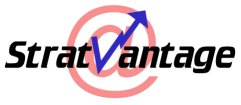|
|
 |
|


Be on the wave or under it™
The News – 07/26/02
|
In this Issue:
|
Recommended Reading
|
|
|
I realize this is the
only newsletter you’ll ever need, but if you want more
in-depth detail, check out:
Stan Hustad’s
The Coaching Connection
Management Signature's
The Express Read
|
If It Seems Too Good To Be True . . .
The second part of the Why
You Need to Get Hip to HIPAA series will appear in a future
SNS
I recently ran into several accounts of
an apparently popular pastime among net geeks: Con Artist Baiting.
Wired magazine ran an article on the adventures of Wendy Willcox,
who responded to one of those bogus appeals from African royalty
for help in laundering money. Often bearing a subject such as
“Urgent Business Proposal!” these scam emails purport to from
a bureaucrat, banker or royal family member who needs help in
moving a pile of money or valuable gold or jewels out of his
country. All you need to do is to advance the miscreant a few
thousand dollars for bribes or other expenses. In return, you
get a cut of the swag.
The most popular form of this appeal,
which has been on the Net since its infancy, purports to come
from a Nigerian prince, and thus this type of fraud is commonly
known as Nigerian 419 fraud (for a section
of the Nigerian penal code) and also known as Advance Fee Fraud.
Often the fraudster asks the unwitting mark to meet him in Africa
or some other country.
Unfortunately, many, many greedy people
fall for this rather transparent con. Despite its preposterous
nature, the 419 scam still claims many victims after roughly
20 years in play. According to a StarTribune article, a Medford,
Ore., couple got bilked out of $40,000 last month. A Vancouver
man lost $10,000. In 1995, according to the Secret Service,
an American lost his life in Lagos, Nigeria, while searching
for his 419 connection. (I don’t know about you, but to me,
these claims sound eerily like the contents of a chain letter:
“A Medford, Ore. couple broke the chain . . .”).
As you can imagine, due to the rampant nature of the Nigerian
emails, law enforcement personnel are overwhelmed.
Nigerian letters accounted
for 15.5 percent of complaints last year to the Internet Fraud
Complaint Center, a partnership between the FBI and the National
White Collar Crime Center. The US Secret
Service gets 100 calls and 300 to 500 emails a day
concerning the con.
There are a whole lot of upright citizens,
however, who are not waiting for the Secret Service or other
government good guys to catch the scammers. Instead, they play
along with the scam and coax some rather remarkable behavior
out of the miscreants.
An anti-scammer known as Buddy Weiserman got his scammer-turned-mark
to run around a park in Ivory Coast, Africa hopping and flapping
his arms like a chicken. The recently famous Wendy Wilcox maneuvered two
scammers in front of a Webcam in Amsterdam where he captured
their picture and posted
it on the Web. The Web site Scamorama
tracks many of the reverse scams people have run on 419ers.
Scam email has been around as long as
there’s been email. A descendant of chain letters, this type
of con preys upon people who want to get something for nothing
(and, hey, that’s most of us!). When evaluating unsolicited
email that ends up in your email box, remember the advice I
constantly give my sons: If it seems too good to be true, it
probably is.
Briefly
Noted
- Shameless Self-Promotion Dept.: Finally
I’ve put up the Nanotechnology
Resources directory I promised last November.
Also, check out the article I wrote for the Taylor Harkins
newsletter entitled, Do you hate your customers?
It continues the theme from my earlier article, analyzing
the media industry’s response to file sharing.
Finally, and at long last, the CTOMentor wireless white paper,
You Can Take It with You: Business Applications of Personal
Wireless Devices, is available at ITPapers.
-
Threats to Powered-Down
Computers: Concerned about CyberThreats,
you’ve turned off your computer when you’re not using it.
Smart idea, but this practice may not be quite as safe as
you think. Many of today’s computer models have a feature
known as “Wake on LAN.” This feature is included for the
convenience of network administrators who don’t want to
get up in the middle of the night to resuscitate a powered-down
computer. The way it works is the administrator sends the
computer a special signal over the network. Despite being
off, the computer’s network card is still monitoring the
LAN, looking for this signal. When it sees it, the computer
powers up. AMD calls their version of this capability Magic
Packet™. The capability is built in to computers made by
Hewlett-Packard, IBM, Gateway 2000 and other leading manufacturers.
So if you want your PC to go off and stay off, pull the
plug!
AMD
- Jargon
Alert: There’s apparently nothing in life
that can’t be improved by assigning it a TLA (Three Letter
Acronym). Witness Autonomous Malicious Logic (AML), AKA software
worms such as Code Red. BFD.
- Microsoft Gets In the Groove:
Microsoft recently announced it was integrating the Groove
Workspace into its SharePoint Teams Services solution. Groove
is the peer-to-peer (P2P) collaboration software designed
by Lotus Notes creator Ray Ozzie. Long the darling of the
P2P world, Groove takes a giant step towards respectability
with this agreement. One of the cool things Groove can do
is collate a workgroups edits to a shared document both synchronously
(while all are online) and asynchronously. When an absent
member checks back in to the Workspace, all the changes he
or she missed are applied to the local copy of the document.
Groove
 O2 Releases xda®: British cell phone network
provider O2 recently announced the release of its PDA/cell
phone converged device. The PocketPC-based device features
up to 3.5 hours of talk time and up to 15 hours of PDA use.
It’s based on an Intel Strong ARM 32-bit processor with 32MB
of RAM. The screen is a reflective 240x320 pixel TFT display
featuring 4096 colors. It was pretty easy to find out all
that stuff. However, in an all-to-typical marketing blunder,
the link to the pricing page was broken earlier this week.
The device starts at £499.99. O2 Releases xda®: British cell phone network
provider O2 recently announced the release of its PDA/cell
phone converged device. The PocketPC-based device features
up to 3.5 hours of talk time and up to 15 hours of PDA use.
It’s based on an Intel Strong ARM 32-bit processor with 32MB
of RAM. The screen is a reflective 240x320 pixel TFT display
featuring 4096 colors. It was pretty easy to find out all
that stuff. However, in an all-to-typical marketing blunder,
the link to the pricing page was broken earlier this week.
The device starts at £499.99.
O2
- New Security Standards Efforts:
You gotta love standards; there’s always so many of them! Currently
there are security standards or best practices efforts underway
at the National
Reliability and Interoperability Council, the FCC, the National Security Telecommunications
Advisory Council, the National Security Council Office of Cybersecurity
ISP Working Groups, the Internet
Security Alliance, the Internet Security Foundation (with
no apparent Web site!), and the National
Communications System. That’s not even including private
efforts like those at Computer
Sciences Corp. Don’t you feel safer knowing that all these
folks are working on
 security standards? security standards?
-
Gartner
On Wireless Readiness:On a recent Webinar sponsored by
Astea International and Intermec Technologies, Gartner Group
analyst Ken Dulaney presented this chart indicating the readiness
of various industry segments to adopt wireless technology.
Dulaney had a number of other very interesting insights, particularly
concerning ROI of wireless deployment. The Total Cost Of Ownership
(TCO) for a cell phone, for example, is $1,369, while the
TCO for a wireless notebook is $11,062. Dulaney also doesn’t
believe in a “one device fits all uses” philosophy, saying
that at some point in the future, you’ll have as many
PDAs in your closet as you have shoes. Look for a link to
the archived version of this Webinar on the Astea Web site
soon.
Astea
The
Wayback Machine – A Year Ago in SNS
The
lead article in the July 26, 2001 SNS
was Wireless and Cashless, about Nokia and stupidly
named 2Scoot’s joint effort to turn the cafeteria at Nokia’s
Irving, Texas’ campus. The trial involved a 2Scoot RFID (Radio
Frequency ID) tag inside a Nokia SmartCover snapped on to
a Nokia cell phone. Diners paid for their meals by placing
an ID-tagged phone containing credit or debit card information
within a few inches of the cafeteria’s card reader.
I offered
the opinion that this scheme might work fine in controlled
situations like campus cafeterias, but might not work in general
commerce, due to the hardware requirements on both the merchant
and consumer side. Turns out 2Scoot ran trials in Raleigh,
NC, in early 2001 where consumers with a 2Scoot-equipped Nokia
5100 could buy food and drinks at Taco Bell and Kentucky Fried
Chicken. The average tab there was $8.
But
how successful were these trials? The 2Scoot Web site is no
help, consisting mostly of bad links to nonexistent press
release pages and general links to things like the NBC-TV
site (the company was apparently picked as one of the five
hottest technologies for 2002 by some purported tech guru
named Omar Waslow). The NBC Web site doesn’t even have a search
function. So were the trials successful? Who knows?
Another
item in the same SNS issue quoted some dot-com hubris. Internet
incubator CMGI’s CEO, David Wetherell, said, “The fastest
growing industry in the world is the least risky thing to
invest in.” A year ago CMGI, the parent of AltaVista and uBid,
was trading at $2.50. Today, it’s at 43 cents, way down from
its high of $200. The company lost $133 million in the second
quarter. In February, Wetherell was replaced as CEO, although
he continues as chairman.
The
item, Auctions Are Hot, quoted Nielsen//NetRatings
research that found consumers spent $556 million at online
auction sites in May 2001, up 149 percent from the preceding
year and up 65 percent from the preceding month. The company
has not repeated their auction assessment this year, although
Forrester predicts consumer auctions will grow eightfold by
2005.
Finally,
the article, Invisible Copyright Infringement, concerned the
strange case of InternetHoroscopes.com and EasyScopes.com.
Seems that InternetHoroscopes.com reproduced text from EasyScopes.com
in white letters on a white background on every page of the
site so search engines would take notice and increase InternetHoroscopes’
ranking in listings.
InternetHoroscopes
was apparently folded into Astrology.com, owned by iVillage,
when iVillage bought Women.com, which owned InternetHoroscopes.
InternetHoroscopes.com International was dissolved in December
2001. Got all that? EasyScopes, on the other hand, is an Internet
horoscope search engine that was started in 1995 by Jochen “Joe”
Savelberg, whose father owns Belgium-based Euregio.net AG,
which registered the EasyScopes trademark and which sued
InternetHoroscopes.com last year for 1 million Euros. As with
so many stories you read on the Net and in newspapers these
days, I was unable to find out what the disposition of the
case was despite it making big news when the lawsuit was filed.
Just the Right Stuff™
If you subscribed to CTOMentor’s Just the Right Stuff™
newsletter, over the past few months, you’d have received news
nuggets like the following, along with expanded analysis. Your
personalized Information Needs Profile would determine which
of these items you’d receive. For more information, check out
CTOMentor.
- Radar Aids 3D Machine Vision
Canesta
has developed machine vision technology that works like a radar
system using invisible light rather than radio waves. The company's
chip would emits the light, which bounces off objects. The chip
measures the time it takes for the light to return and calculates
the depth of various features of objects in its field of vision.
ZDNet
- Nextel Tops in Customer Satisfaction
In
a survey of wireless Internet users, Cahners In-Stat/MDR found
that Nextel was the best in customer satisfaction of the top
four US wireless carriers. Cahners asserts there are four key
attributes that drive customer satisfaction in this market:
breadth of applications available, ease of use, quality of service,
and reliability of service.
Cahners In-Stat/MDR
- Lucent Claims Speed, Capacity Breakthrough
Lucent
Technologies claimed it has developed a technology that increases
both the speed and the number of simultaneous users of third-generation
UMTS (Universal Mobile Telecommunications System) wireless products.
AllNetDevices
Is this still news to you? Get this Stuff as it happens,
not months later. Subscribe to CTOMentor today. Charter subscription discounts
still available.
Return to Mike’s
Take
|
|
Copyright © 2000-2008, StratVantage Consulting, LLC. All rights
reserved.
Please send all comments to  .
.
|
|
|
|
|

Looking to light up your office, your business, or your city?
The WiMAX Guys™ can help you easily provide secure wireless Internet to your customers.
The WiMAX Guys specialize in designing and running wireless networks. We're experienced, we're quick, and we won't cost you an arm and a leg. Give us a call today provide your users a wireless Internet experience tomorrow.
Call
Mike Ellsworth
Head Guy
952-400-0185
www.TheWiMAXGuys.com
|
Alert SNS Reader Hall of Fame
About The Author
Announcing CTOMentor,
a New Service from StratVantage

Can’t Get Enough of ME?
In the unlikely event
that you want more of my opinions, I’ve started a Weblog. It’s the fashionable
thing for pundits to do, and I’m doing it too. A Weblog is a datestamped
collection of somewhat random thoughts and ideas assembled on a Web
page. If you’d like to subject the world to your thoughts, as I do,
you can create your own Weblog. You need to have a Web site that allows
you FTP access, and the free software from www.blogger.com.
This allows you to right click on a Web page and append your pithy thoughts
to your Weblog.
I’ve dubbed my Weblog
entries “Stratlets”, and they are available at www.stratvantage.com/stratlets/.
Let me know what you think.
Also check out the TrendSpot for ranking of
the latest emerging trends.
In Memoriam
Gerald
M. Ellsworth
March
14, 1928 - July 5, 2003
In Memoriam
Jane C. Ellsworth
July
20, 1928 - July 20, 2003
|







